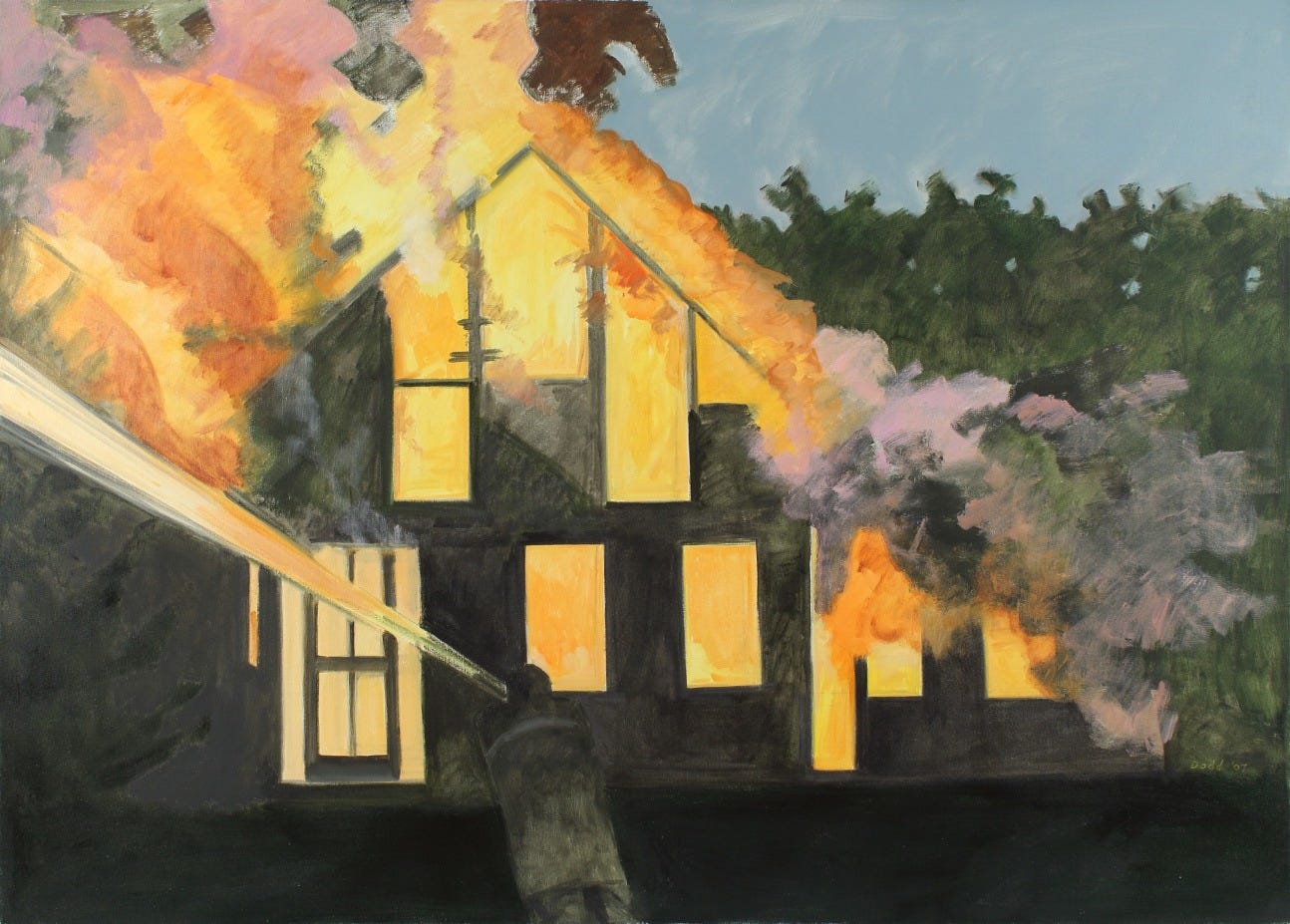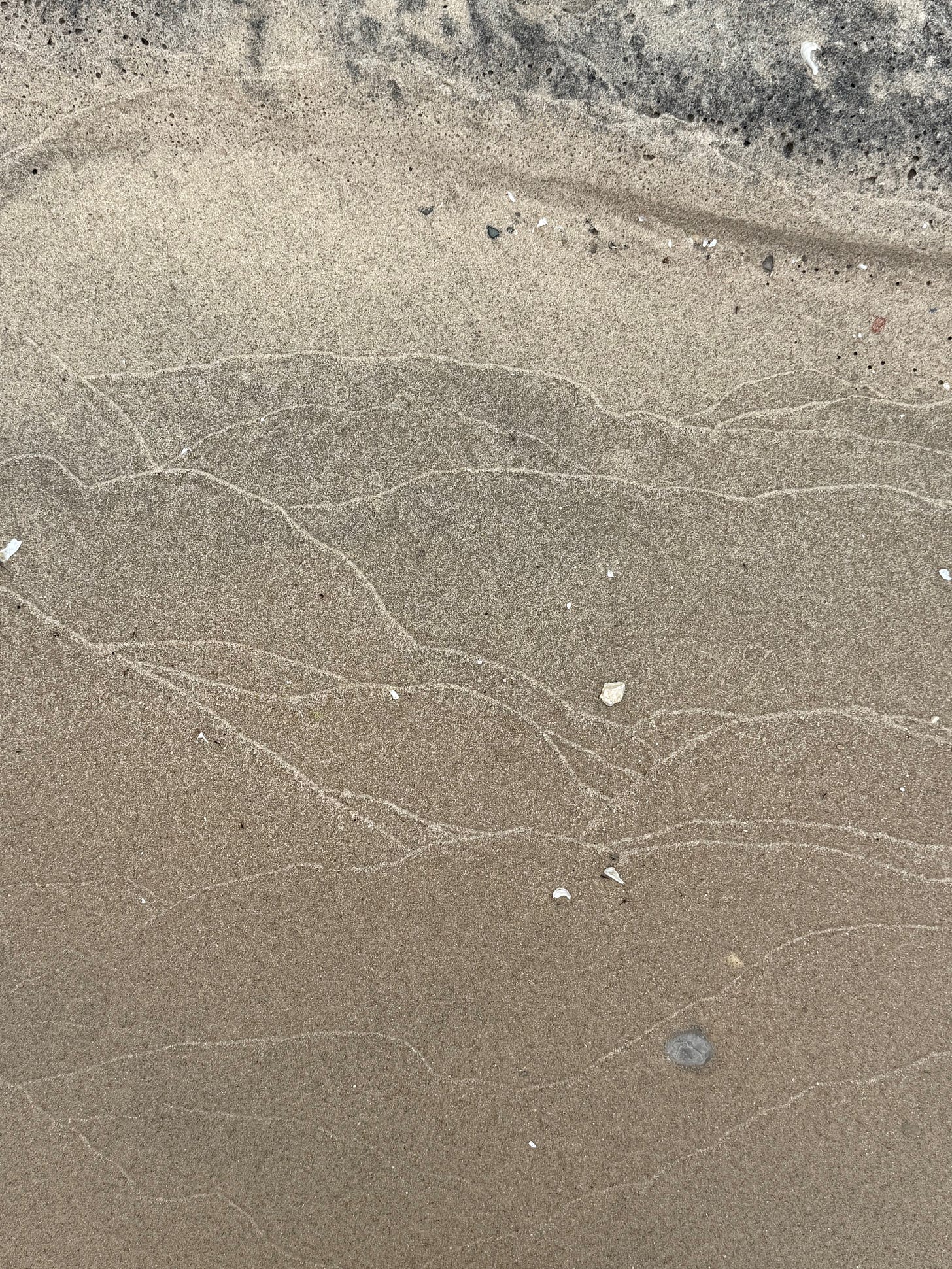Hello and welcome to Constellations No. 12–
Amidst the summer sun’s apex today, I ask myself: what does this wide dose of light allow? What becomes visible? What grows? Energy rises with the sun, and with it a sense of wide open potential. Even so, right now a sense of urgency prevails.
This same energy is currently heightened by a overwhelming feeling of rising oppression in the United States and abroad. Fascism is growing here in America with untethered injustices occurring daily; our justice system is being put to the test in countless ways; many thousands of people are suffering and wars rage on across the world. Amidst the madness and cruelty of these dark storms, it is hard to feel summer’s sun.
Like nearly everyone I know I have felt a heaviness weighing on my daily life for the last six months, especially as I recognize in this moment the stinging familiarity of other critical moments in history when the deranged logic of fascism rose to prominence. I am incredulous that as life seems to go on normally in some ways, institutions and tenets of democracy are rapidly crumbling beneath our feet. The overwhelm that results is a tactic inflicted purposefully to keep us paralyzed in the surreal nature of it all.
Recently, I learned that here is a term for this feeling: hypernormalization, or the juxtaposition of the dysfunctional and the mundane, leading to a sense of paralysis, overwhelm and inaction.
Hypernormalization arises in me with a swift double-edged sword: exigency and futility. Urgency and grief become complexly intertwined, both in the big picture ways that we are navigating communally, and in deeply personal ways as I explore questions of goals and identity while I get to know myself again in recovery from cancer.
It has been one year since my last cancer treatment, and nine months since my last major surgery. Certain aspects of the experience feel far away, and others feel as if they occurred only seconds ago. My sense of loss, and the lost time that I cannot, nor will not get back is coupled with a burning desire to live as fully and sincerely as I can while I get to be here. The feeling is intensified by the pervasive sense of corruption and destruction all around us, and the question so many are asking in this atmosphere: how do I show up most effectively in this chaotic moment?.
I find that the foil to urgency’s bubbling freneticism is the attempt to ground myself in the present. For me, the fastest path to the present is creating art. I try to make at least one solid fresh observation a day. Sometimes it is a note jotted or a quick sketch; Other times it is a longer session in the studio. Continuing to invest in noticing in this way helps slow down and be permeable to the inherent beauty and good that does exist in people, relationships, communities and the natural world.
Even when my actions feel ridiculously small in comparison to the scale of the problems we collectively face, I try to remember that art and art-making are absolutely crucial to human existence. Without art, where would we be?
Art is the realization of individual uniqueness in the world. At its core, it declares: “I am here. I exist,” and therefor there is, crucially, a place for everyone in art. If we allow our work as artists to be arrested, we become compliant; we give away our most powerful human rights to belong, to self-express, to feel, to question, to create something that did not exist before, to think unique, individual thoughts. By creating, artists actively resist forces that wish to homogenize, reduce, dehumanize, and commodify.
Below, I share the work of a few artists and writers who are inspiring me to keep going right now, through the bright light of summer and beyond. I hope their illuminations will help you stay the course, too.
NEWS
Farm Club Panel
In May I participated in an artists’ conversation at Farm Club led by Sarah Bearup Neal with artists Katherine Corden, Alyssa Smith and Alexa Grambush. I’m grateful to be part of a community here in Northern Michigan that celebrates and supports artists, writers, thinkers and makers. Big thank you to the folks at Farm Club for creating this engaging evening.
Middle School Art Lab
Tracy Smedes-Hepler and I wrapped up our final session of Middle School Art Lab at Leland’s Old Art Building last week with a session devoted to assemblage, looking at the art of Joseph Cornell as inspiration. Teaching these talented young artists over the last six months has been a balm— I have learned so much from them. Thank you Old Art Building for helping support this course. If you have a middle school-aged artist stay tuned for upcoming offerings.
BRIGHT LIGHTS
Artist’s Roles in the World Right Now
Lately I have filled my ears and eyes with the words of artists and thinkers that I admire. Here, I share a few highlights from three essays and an interview that have formed a pithy, imaginary conversation with each other in my head. I highly encourage you to read and listen to each one in their entirety.
Poet and essayist Jane Hirshfield, recently started publishing on Substack. Her two newest pieces, Poems in a Time of Crisis, Part 1 (April) and Part 2 (June), are a resounding call to artists, poets, writers, and thinkers everywhere, via exploration of four qualities in poetry that “work against despair”: tenderness, courage, humility and resilience (her essays on the last three qualities are forthcoming).
In Poems in a Time of Crisis, Part One of Several: We Think by Feeling, Hirshfield writes:
“Poems think – we think – by feeling. Feelings are a life’s substrate: the flickering-ember-sense that reminds us, if we notice, what luck it is — what brief and quickly-passing luck — to partake of existence-awareness at all. Emotions are also instructions in survival, indispensable instruments of information.”
In his interview with Amanda Petrusich on New Yorker Radio Hour, musician, writer and activist Brian Eno reflects a similar understanding of how art taps into our universal humanity:
“Nearly all of the things that humans regard as peak experiences…being bowled over by a piece of music, being knocked out by a sculpture of a dance or something like that… all those things are situations where we willingly let something happen to us that is slightly beyond our ability to comprehend and control. We surrender. I think a lot of the art experience is surrendering. And that’s the point, you know, the whole point is being moved, having feelings.”
Likewise, in Poems in a Time of Crisis, Part Two: Tenderness Hirshfield reflects on poetry’s role in shedding light on tenderness, especially amidst a violently divisive time:
"Tenderness as a feeling falls into what are called the “complex” emotions, those that hold more than a single dimension at once. Complex emotions are always also relational: they arise in the conversation between our own lives and the lives of others…
At the core of emotional tenderness is, first, the awareness that what we feel tender toward is beloved; then also, the urge to protect it. We feel tenderness for what is fragile, perishable, at risk, which we want to survive…
“Tenderness is unselfish. It wants to preserve what is loved for its own sake, not ours. Part of tenderness, too, is the penumbra-awareness of transience. To feel tenderness is to remember that all lives are mortal.”
And, in her essay Be An Art Kid, artist Anna Brones expounds on this idea, reminding us that tenderness honed by artists can be found at the root of generative action:
“As the world crumbles, artists are often the ones calling things out before others dare, helping to put words and visuals to movements. They are the ones to speak their minds through their creativity. They push progress, envisioning different worlds and ways of being.”
These, and others like them are the voices I am heeding most right now. I am indebted to other artists—for in persisting with their work they make me feel less alone in mine. They remind me that each one of our unique contributions matters in the larger voice of the collective resistance.
A POEM FOR THE MOMENT
Mathematics By Jane Hirshfield I have envied those who make something useful, sturdy— a chair, a pair of boots. Even a soup, rich with potatoes and cream. Or those who fix, perhaps, a leaking window: strip out the old cracked putty, lay down cleanly the line of the new. You could learn, the mirror tells me, late at night, but lacks conviction. One reflected eyebrow quivers a little. I look at this borrowed apartment— everywhere I question it, the wallpaper’s pattern matches. Yesterday a woman showed me a building shaped like the overturned hull of a ship, its roof trusses, under the plaster, lashed with soaked rawhide, the columns’ marble painted to seem like wood. Though possibly it was the other way around? I look at my unhandy hand, innocent, shaped as the hands of others are shaped. Even the pen it holds is a mystery, really. Rawhide, it writes, and chair, and marble. Eyebrow. Later the woman asked me— I recognized her then, my sister, my own young self— Does a poem enlarge the world, or only our idea of the world? How do you take one from the other, I lied, or did not lie, in answer. © Jane Hirshfield, “Mathematics” from Given Sugar, Given Salt. Copyright © 2001














Thank you.